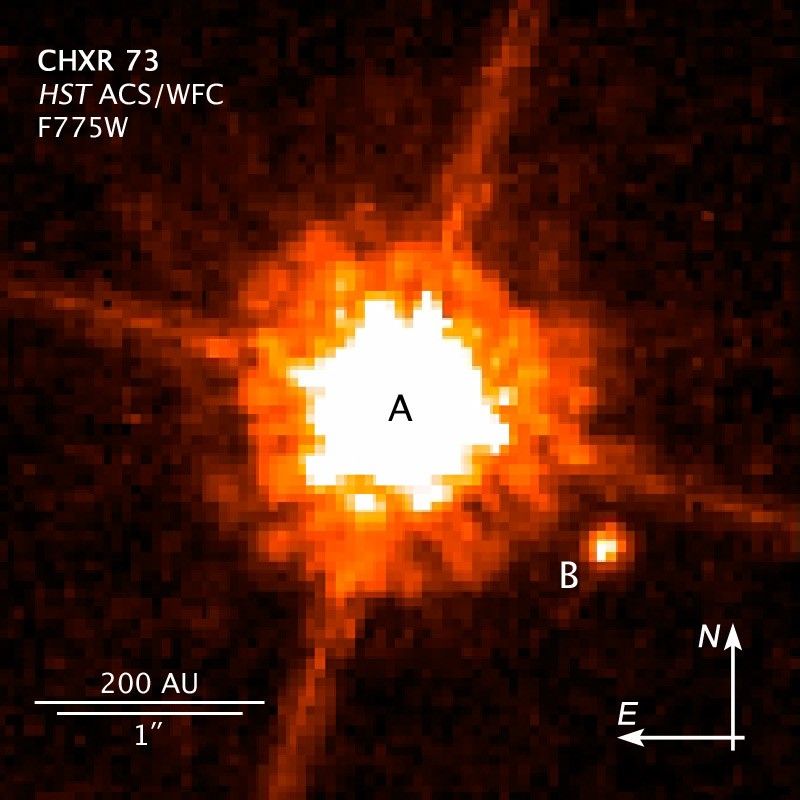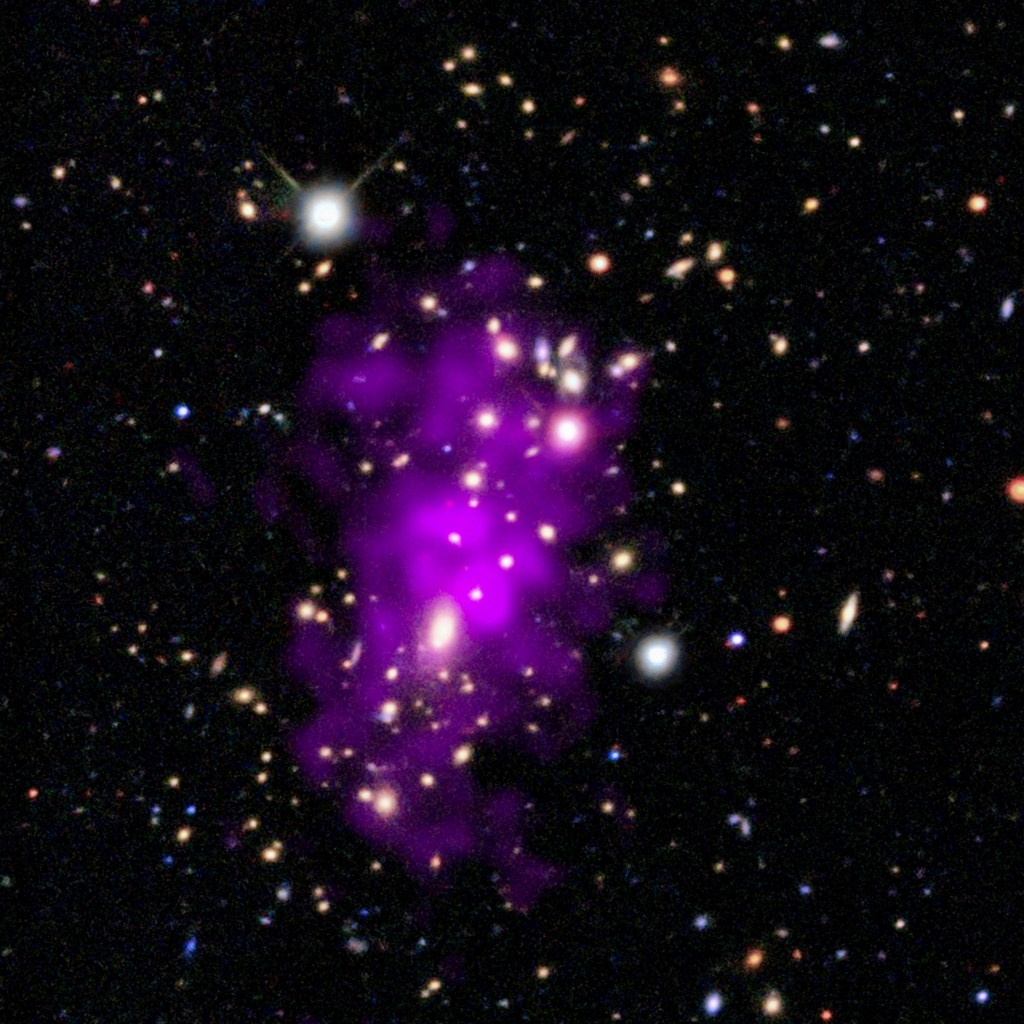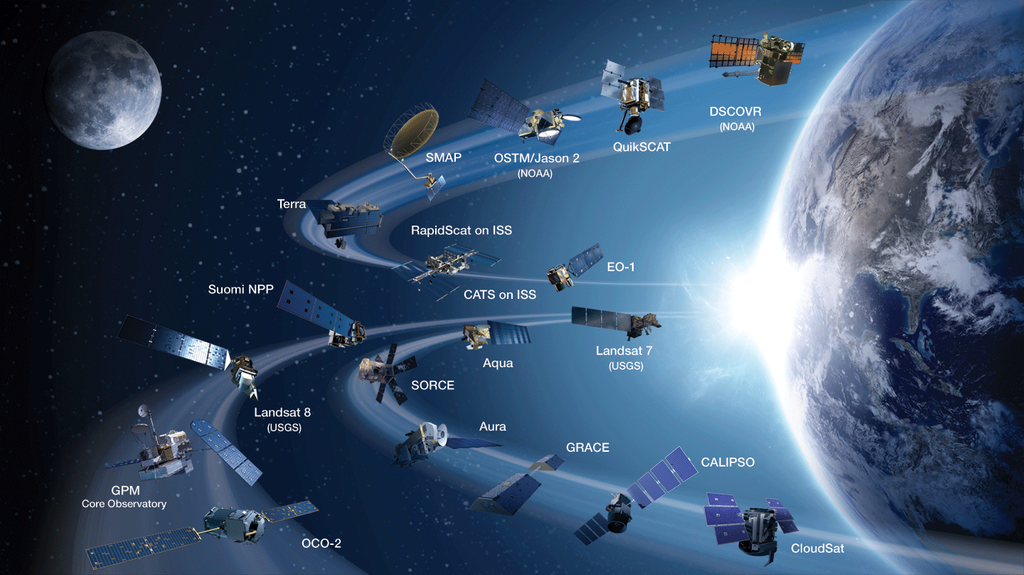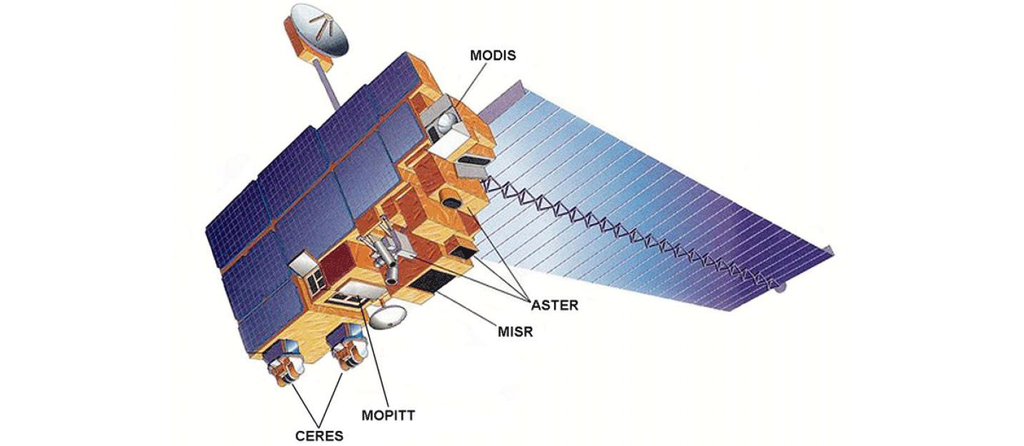1 min read
Artist’s View of Red Dwarf and Substellar Companion

This is an artist's concept of the red dwarf star CHXR 73 (upper left) and its companion CHXR 73 B in the foreground (lower right) weighing in at 12 Jupiter masses. CHXR 73 B is one of the smallest companion objects ever seen around a normal star beyond our Sun.
Estimated to be 12 times the mass of Jupiter, the object is small enough to be a planet, but also large enough to be a brown dwarf, a failed star. The NASA Hubble Space Telescope discovery of this diminutive companion to a low-mass star is a dramatic reminder that astronomers do not have a consensus in deciding which objects orbiting other stars are truly planets.
CHXR 73 B is 19.5 billion miles from its red dwarf sun (roughly 200 times farther than Earth is from our Sun). The youthful, 2-million-year-old star is one-third the mass of our Sun and lies approximately 500 light-years away in the Chamaeleon I star-forming region in our Galaxy.
- Release DateSeptember 7, 2006
- Science ReleasePlanet Or Failed Star? NASA’s Hubble Telescope Photographs One of Smallest Stellar Companions Ever Seen
- Credit
Related Images & Videos

CHXR 73 A and B - Red Dwarf and Substellar Companion
This NASA Hubble Space Telescope image shows one of the smallest objects ever seen around a normal star. Astronomers believe the object is a brown dwarf because it is 12 times more massive than Jupiter. The brown dwarf candidate, called CHXR 73 B, is the bright spot at lower...

CHXR 73 A and B - Red Dwarf and Substellar Companion (Annotated)
This NASA Hubble Space Telescope image shows one of the smallest objects ever seen around a normal star. Astronomers believe the object is a brown dwarf because it is 12 times more massive than Jupiter. The brown dwarf candidate, called CHXR 73 B, is the bright spot at lower...
Share
Details
Last Updated
Aug 17, 2025
Contact
Media
Claire Andreoli
NASA’s Goddard Space Flight Center
Greenbelt, Maryland
claire.andreoli@nasa.gov































